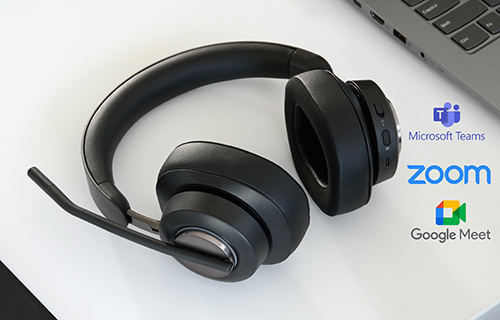
Your daily routines are what helps you reduce stress and deal with work pressure. Everyone’s morning routines may be different but at some point, most of us had to commute to and from work. While sitting in traffic is rarely a productive use of your time, when transitioning to a Work from Home (WHF) arrangement, you may find yourself missing these “intermissions” between work and home life.
The idea of separating work and life isn’t new. Scientists have consistently stated that a work/life balance is good for your mental health and wellbeing. When you don’t shut off after the workday, every notification or ping from your smartphone could lead to stress, which ultimately affects your performance. By improving your “boundary control”, you’re able to create a stress buffer that improves your work/life balance. One method that’s becoming popular during WFH situations for improving boundary control is the concept of a virtual commute.
What is a Virtual Commute?
A fake commute may sound excessive for most WFH employees, but the idea is so popular that Microsoft recently released a virtual commute feature in their Teams platform. Although it debuted to mixed responses, the company believes a virtual commute can help enterprises to create better daily structures for their remote workforces.
If you think about it, usually during your commute, you depend mainly on motor functions and drive a route you’ve used for ages. This time allows you to rethink strategies, organize your thoughts on specific subjects, and set out goals you want to achieve for the day (also called prospection). Once you’re no longer required to travel to your place of work, it may save you time and money (and provide more convenience), but what are you actually losing?
Mainly, you’ll no longer be able to differentiate between when you’re at work and when you’re actually “at home”. When a new notification comes in, the impulse is to respond immediately and address the issue as soon as possible. It’s especially true for those employees who aren’t used to WFH and have yet to develop the required coping mechanisms that prevent burnout and fatigue.
How to Develop a Virtual Commute that Works for You
Even evening commutes is beneficial as it helps with memory consolidation. Replaying the day’s events and reviewing your performance is a form of catharsis that sets you up to deal with the next challenge in your work life. The average commute is 38 minutes per day around the world, giving employees time to reflect, plan, strategize, and recover from their workloads. In WFH environments, trying to find a similar release can be challenging. Here are some tips for establishing a virtual commute during your WFH experience.
1. Practicing Mindfulness to Relieve Job Stress
At the end of every day, you can use the same time as your evening commute to practice mindfulness. Stress is known to build up over time and can start influencing your brain functions if you don’t allocate some time to review and reflect on your workday. Once you’ve completed your mindfulness practices, you’ll be free to focus your attention on your personal life.
2. Make a List for Your Fake Commute
One of the biggest benefits of a virtual commute is that it doesn’t have to be the same thing every day. You can create a list of different activities for both the morning and afternoon, while also getting some activities done during your lunch break. Create a list of relaxing things that you think will benefit you and schedule them for different days of the week.
3. Use Your Virtual Commute to Learn/Adopt New Routines
If you’re working from home for extended periods, you’ll probably no longer be as physically active as previously. You can use this time to adopt new activities and learn new skills or take up a new hobby if it helps you reduce stress and plan your work. Stretching is a great way to relieve stress and keep you healthy. For guidance on how to set up your home workstation for improved comfort and how you can stretch your muscles during your virtual commute, see this guide.
4. Separate Morning and Afternoon Virtual Commutes
Preparing for the workday will require a different ritual than when you finish. In the evenings, you will want to debrief and reflect, while in the morning it’s all about organizing and prioritizing tasks. By separating your morning and afternoon virtual commutes, you can maximize your time and find an activity that helps you with the specific mental exercise.
5. Be Open to New Activities and Possibilities
The time you save by not commuting to work is also an opportunity to look for new possibilities that previously just didn’t fit into your schedule. A virtual commute should help you to separate your focus time. Any kind of activity that you wanted to try could probably fit into the time you’re saving. Whatever helps you differentiate your work time from your personal life is a worthwhile addition to your WFH experience.
Personal Comfort and Ergonomic Support Remains Essential
Even with a virtual commute, you’ll need to ensure your desk setup is ergonomic and comfortable, helping you stay healthy. While mental health and well-being may depend on a virtual separation of work and personal life, your long-term health will depend on how you configure your desk.
Footrests, laptop risers, monitor arms, and an ergonomic mouse should be part of your standard setup. You could also opt for additional solutions like a wellness monitor stand or wrist support to ensure you stay healthy while spending hours behind your desk.
Kensington has a range of solutions that will help you stay comfortable and healthy while you WFH. If you adopt a virtual commute for the start and end of your workday, you could opt to listen to upbeat (in the morning) or relaxing (in the evening) music while sitting behind your desk with comfortable headphones. Whatever your new ritual is, you’ll find a Kensington solution suited to your specific needs.
A virtual commute allows workers to prepare for (and decompress from) their flexible workday. It creates the needed separation between your work and personal life, which is vitally important for keeping a healthy balance between two psychologically challenging environments. With the time you’re saving from traveling to and from work, you can help yourself grow, learn new rituals, and ensure you maintain a healthy state of mind regardless of your daily pressures.
